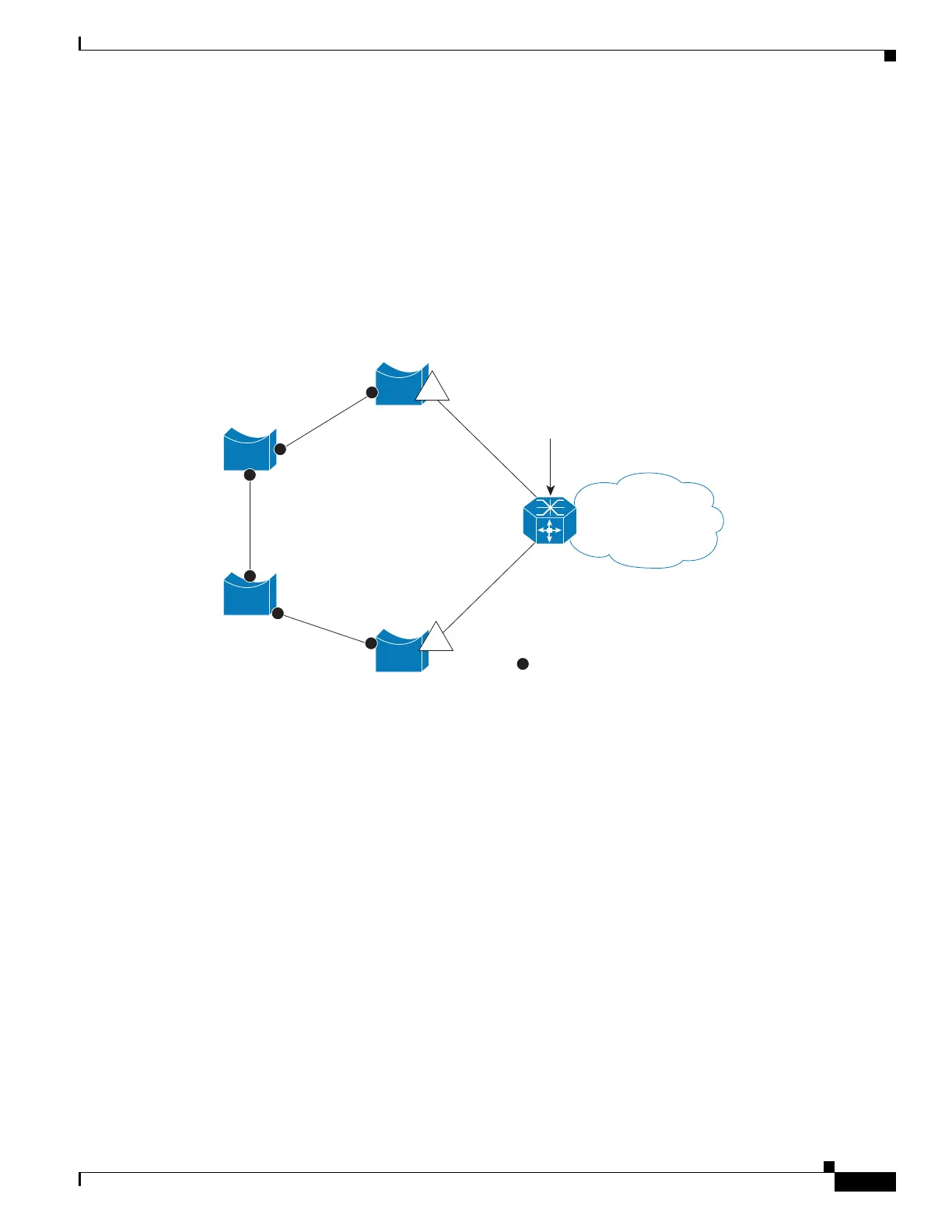24-3
Software Configuration Guide—Release IOS XE 3.6.0E and IOS 15.2(2)E
OL_28731-01
Chapter 24 Configuring Resilient Ethernet Protocol
About REP
You can construct almost any type of network based on REP segments. REP also supports VLAN load
balancing, controlled by the primary edge port but occurring at any port in the segment.
In access ring topologies, the neighboring switch might not support REP, as shown in Figure 24-3.
Starting with Cisco IOS Release 15.0(2)SG, you can configure the non-REP facing ports (E1 and E2) as
edge no-neighbor ports. These ports inherit all properties of edge ports, and you can configure them the
same as any edge port, including configuring them to send STP or REP topology change notices to the
aggregation switch. In this case the STP topology change notice (TCN) that is sent is a multiple
spanning-tree (MST) STP message.
Figure 24-3 Edge No-Neighbor Ports
REP has these limitations:
• You must configure each segment port; an incorrect configuration can cause forwarding loops in the
networks.
• REP can manage only a single failed port within the segment; multiple port failures within the REP
segment cause loss of network connectivity.
• You should configure REP only in networks with redundancy. Configuring REP in a network
without redundancy causes loss of connectivity.
To use REP effectively, you should understand the following topics:
• Link Integrity, page 24-4
• Fast Convergence, page 24-4
• VLAN Load Balancing, page 24-4
• Spanning Tree Interaction, page 24-6
• REP Ports, page 24-6
E1 and E2 are configured
as edge no-neighbor ports
273792
REP ports
REP not
supported
E2
E1

